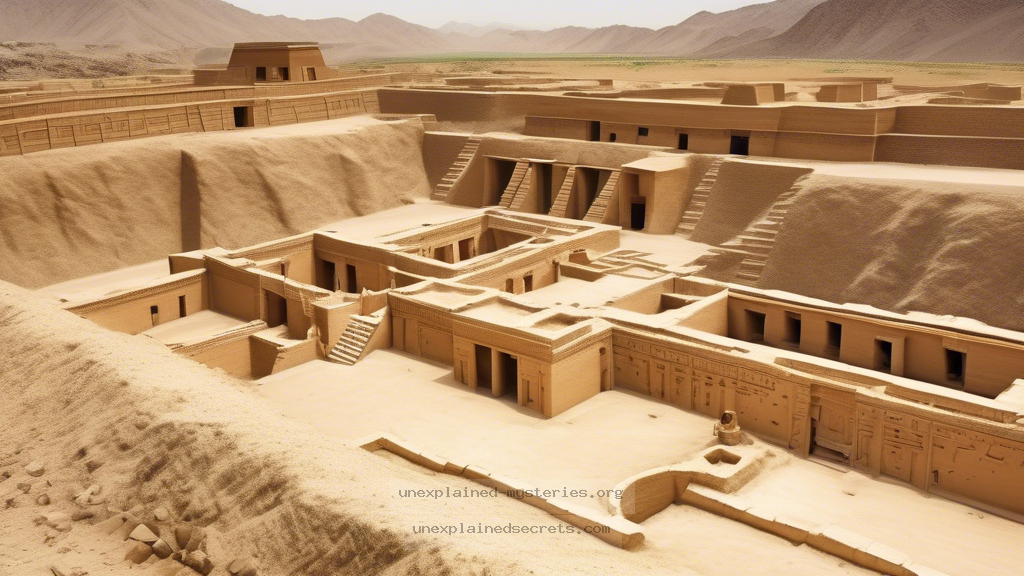What Happened to the Advanced Civilization of the Indus Valley, and Why Did It Disappear?
What Happened to the Advanced Civilization of the Indus Valley, and Why Did It Disappear?
The mystery surrounding the Indus Valley Civilization (IVC), one of the world’s earliest urban cultures, captures the imagination of historians, archaeologists, and anyone intrigued by the enigma of lost civilizations. Flourishing around 2500 BCE in what is now modern-day Pakistan and northwest India, this advanced society showcased remarkable urban planning, sophisticated drainage systems, and a writing system that remains undeciphered. Yet, despite its accomplishments, the IVC mysteriously declined and eventually vanished. Understanding what happened to this civilization is crucial for several reasons: it offers insights into human resilience, the impacts of environmental changes, and the complexity of societal development.
Historical Context of the Indus Valley Civilization
The Indus Valley Civilization was contemporaneous with other ancient cultures such as Mesopotamia and ancient Egypt. It is estimated to have had a population of about five million people at its height, spread across major urban centers like Harappa and Mohenjo-Daro. The civilization was known for its grid-like city layouts, advanced drainage systems, and standardized fired-brick construction, indicating a high level of social organization and planning.
Trade links with Mesopotamia suggest that the IVC engaged in extensive commerce, exporting goods such as textiles, beads, and pottery while importing raw materials like copper and precious stones. The writing system, though still undeciphered, hints at a complex administrative structure and cultural richness.
Core Concepts: What Might Have Caused the Decline?
Several theories have been proposed to explain the decline of the Indus Valley Civilization. These include:
- Climate Change: Shifts in monsoon patterns could have led to droughts, affecting agriculture.
- River Dynamics: The drying up of the Ghaggar-Hakra River system may have made the area less habitable.
- Invasion Theories: Some historians suggest that invasions by Indo-Aryan tribes contributed to the decline.
- Internal Strife: Social upheaval or economic collapse due to overpopulation may have played a role.
Evidence Supporting Climate Change Theories
Recent studies have provided compelling evidence supporting the role of climate change in the decline of the Indus Valley Civilization. Paleoclimatic data suggests that the region experienced significant aridification around 1900 BCE, coinciding with the decline of urban centers. Research conducted using sediment core samples from nearby lakes indicates that the monsoon patterns shifted, resulting in diminished rainfall and prolonged droughts. This would have had dire consequences for agriculture, which was the backbone of the civilization’s economy.
Impact of River Dynamics
The Ghaggar-Hakra River, once a major source of water for the IVC, is believed to have been prone to seasonal changes that severely impacted agricultural production. Archaeological evidence suggests that the river may have dried up or changed course, leading to the abandonment of cities. The changing river dynamics would have exacerbated the effects of climate change, forcing communities to relocate in search of more reliable water sources. This shift likely contributed to the gradual decline of urban centers.
Invasion Theories: A Controversial Perspective
While many historians have leaned towards environmental factors as the primary cause of the IVC’s decline, some argue that invasions by Indo-Aryan tribes may have played a significant role. This theory is based on the presence of Vedic texts that mention conflicts and migrations. However, archaeological evidence supporting this view is limited, and many experts caution against attributing the decline solely to invasion, as this oversimplifies a complex situation.
Internal Strife and Societal Changes
Another perspective on the decline of the Indus Valley Civilization is the possibility of internal strife. As cities grew and populations swelled, resources may have become strained, leading to conflicts over water and agricultural land. The evidence of fortifications in some settlements suggests that communities may have fortified themselves against potential threats, whether from within or outside. Additionally, the sudden cessation of standardized weights and measures indicates a breakdown of the economic systems that had once facilitated trade and cooperation.
Common Misconceptions About the Indus Valley Civilization
There are several misconceptions surrounding the IVC that warrant clarification:
- Misconception 1: The Indus Valley Civilization was a monolithic entity.
In reality, it comprised various city-states with differing social structures and economic practices. - Misconception 2: The civilization was entirely peaceful.
Evidence of fortifications and potential conflict suggests societal tensions. - Misconception 3: The decline was abrupt.
The decline occurred over several centuries, indicating a gradual transformation rather than a sudden collapse.
Best Practices for Investigating Lost Civilizations
For those interested in investigating mysteries surrounding lost civilizations like the IVC, a multidisciplinary approach is essential. Here are some best practices:
- Cross-Disciplinary Collaboration: Work with climatologists, archaeologists, and historians to gain a comprehensive understanding.
- Advanced Technologies: Utilize satellite imagery and ground-penetrating radar to uncover hidden structures.
- Field Studies: Conduct on-site excavations and studies to gather primary data.
- Public Engagement: Involve local communities in research efforts to preserve cultural heritage.
Future Developments and Ongoing Research
Research into the Indus Valley Civilization is ongoing, with new findings emerging regularly. Advances in technology, such as DNA analysis and improved dating techniques, are shedding light on the demographics and social structures of the civilization. Furthermore, international collaborations are facilitating a more integrated approach to understanding the complexities of ancient societies.
Upcoming excavations in lesser-known sites may reveal more about the civilization’s trade networks and interactions with neighboring cultures. As researchers continue to decode the script and understand the societal dynamics, we may gain a clearer picture of the IVC’s rise and fall.
Conclusion: The Indus Valley Civilization’s Legacy
The mystery of the Indus Valley Civilization’s disappearance is a multifaceted enigma that reflects broader themes in human history: the interplay between environment and society, the fragility of urban life, and the complexities of cultural evolution. While much remains unknown, the ongoing exploration of this ancient civilization offers valuable lessons about resilience, adaptation, and the forces that shape human societies. As we continue to investigate and unravel these mysteries, the Indus Valley will undoubtedly remain a focal point for understanding our past and its implications for the future.
Other Articles
Recent Posts
- What Happened to Flight MH370? The Conspiracy Theories That Still Haunt Us
- What Secrets Lurk Within the Walls of the Infamous Trans-Allegheny Lunatic Asylum?
- What Evidence Supports the Existence of Bigfoot in the Pacific Northwest?
- What Happened to the Indus Valley Civilization? Unraveling the Mysteries of Ancient Urban Life
- Can Telepathy Be Scientifically Proven Through Laboratory Evidence?







